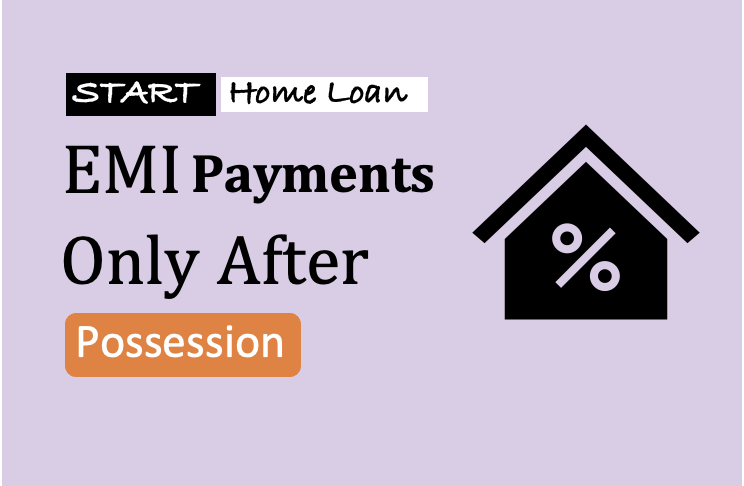Reducing Balance Loan Calculator
Summary:
EMI (₹):
Total Interest (₹):
Total Payment (₹):
Amortization Table:
| Month | Principal (₹) | Interest (₹) | Remaining Balance (₹) |
|---|
Introduction
Allow me to tell you a story about reducing balance loan calculation. Why I’m writing a blog post about it? Because it helped me and my friend to see the reducing balance method from a perspective of cheap vs costly loans. But first, I’ll tell you the story. Then we will dig deeper into the reducing balance method of loan calculation. It will explain how reducing the balance method makes loans cheaper.
The Story
One day my friend got a call from a bank. He was told that the bank can offer a personal loan @8.5% p.a. interest. My friend was surprised because the normal personal loan rate prevailing at that time was 14%+ per annum. Hence my friend concluded that the call was spammy.
But before he could disconnect the call, the bank personnel made two statements:
- Bank can offer loan @8.5% at ‘fixed interest rate‘.
- Bank can offer loan @14.88% at ‘reducing balance rate‘.
Though these two statements confused my friend further, however, he could at least make out that the call was not spammy. Anyway, he disconnected the call and reached me. Together we researched why banks offer two different interest rates on the same loan.
Here are our findings…
Fixed Interest vs Reducing Balance Method
The bank was ready to offer a personal loan @8.5% per annum. When the market rate was 14%, how the bank was offering such low interest rates? The answer was hidden in both the statements of the bank’s executive.
Frequently, when discussing interest rates in the context of home loans, we often refer to the reducing balance method without realizing it. But here 8.5% was offered at the fixed interest method.
- Suggested: Watch this YouTube video.
#1. Fixed interest loan calculation…
Let’s see an example to know what is ‘fixed interest rate method’ is.
Suppose one took a personal loan of Rs.1,00,000, at 8.5% interest (@fixed rate) for 1 year. The loan calculations will be as below:
Things to note in the above calculation:
- Interest Payable: The total interest payable calculation is simple. But on the downside, this simplicity makes the ‘fixed interest loans’ expensive for the borrowers. Calculation: Rs.1,00,000 x 8.5% x 1 year = Rs.8,500.
- Total Payment: The borrower has to repay the loan principal along with the interest for 1 year. Hence, the total payment due will be Rs.1,08,500 (Rs.1,00,000 + Rs.8,500).
- Monthly Payments (EMI): The borrower has to pay Rs.1,08,500 in equal installments paid each month. Hence, EMI (monthly payments) will be Rs.9,042 (Rs.1,08,500 / 12).
#2. Reducing balance loan calculation
Here we will understand the difference between ‘fixed rate’ and ‘reducing balance rate’. Let’s take the same example as above (in #1), but this time instead of the interest rate being fixed, it will be reducing balance. Suppose one took a loan of Rs.1,00,00 taken @8.5% interest (reducing balance) for 1 year.
This is how the reducing balance loan calculation would look like:
Things to note in the above calculation:
- Monthly EMI: In the reducing balance method, interest calculation is more complicated. Hence, we are using Excel to do the computation. First, we will calculate the EMI using the PMT formula of Excel. Please note the difference in EMI between fixed (Rs.9,042) and reducing balance method (Rs.8,722).
- Lower EMI: In the reducing balance method, the EMI is lower than the fixed interest method. Why? Unlike the fixed interest method, here the interest calculation is done each month. As the loan outstanding reduces each month (after each EMI payment), hence the borrower pays less interest each passing month.
EMI Calculator: Reducing Balance Loan Vs Fixed Interest Loan
Check here the reducing balance loan calculator.
Fixed Interest Loan Calculator
| Principal Loan Amount (Rs.) | |
| Interest Rate (%) | |
| Time (in years) |
| Total Interest (Rs.) | |
| Total Payment (Rs.) | |
| EMI (Rs.) |
EMI is less in “reducing the balance method”, Why?
For borrowers, the reducing balance method is economical. How? Because they have to pay less EMI. Why EMI is less? Because of the way the interest calculation is done. To understand this, let’s take the same example as above but here we’ll do a more detailed calculation (of each passing month).
A loan of Rs.100,000 taken at 8.5% p.a. interest (reducing balance rate) for one year (12 months).
Reducing Balance Rate of Interest Calculation in Excel
Check how the interest load gets lowered each month. This happens because the interest calculation is done on the “loan balance” that is available at the end of each month (after each EMI gets paid). As the loan balance is reducing every passing month, interest on the loan is accordingly reducing.
However, this is not the case with the ‘fixed interest method.’ There the interest load remains the same even if the “loan balance” is falling.
Calculation in Excel Using Fixed Interest Method
Check how the interest load remains the same each month. This happens because the interest calculation is done based on the loan balance in the first month. No matter if the loan balance is reduced with EMI’s being paid, the payable interest remains the same.
Comparison between Reducing Balance and Fixed Interest calculations
| SL | Description | Reducing Balance Loans | Fixed Interest Loans |
| 1 | Offered Interest Rates on Loans | Higher | Lower |
| 2 | Interest is calculated on which loan balance | Complicated | Simple |
| 3 | Interest paid each month | Reduces with time | Remains constant with time |
| 4 | Based on the loan balance of the first month | Based on reducing loan balance | Based on loan balance of the first month |
| 5 | Principal paid | Same | Same |
| 6 | Total Interest Paid | Lower | Higher |
| 7 | Monthly EMI’s | Lower | Higher |
Explanation: 14.88% Interest Vs 8.5% Interest rates…
Coming back to the story which was narrated at the beginning of the blog post. Banks were ready to offer loans to my friend at two different interest rates:
- @8.5% p.a: Loan offered at Fixed Interest.
- @14.88% p.a: Loan offered at Reducing Balance Interest.
What was the logic of this loan offering? How the bank was able to offer such low-interest rates? The banks could offer such low interest (8.5% vs 14.88%) because they were making anyhow the same amount of money.
Check the interest calculation shown below:
Take-away for us from the above table:
- Reducing Balance Loan: Though the visible interest rate of the “reducing balance loan” looks visually higher, the total payable by the borrower (principal + interest) is small.
- Fixed Interest Loan: Though the visible interest rate of the “fixed interest loan” is small, the total payable by the borrower (principal + interest) is high.
Conclusion
The reducing balance method is a more borrower-friendly approach to interest calculation on loans. Why? Because when we pay EMI each month, there is a simultaneous reduction in loan outstanding balance. When the loan balance reduces, the accrued interest must also fall. The reducing balance method uses this philosophy to calculate the payable interest.
I hope I was able to give you a decent idea about the reducing balance method of loan calculation.
In case you have any query/feedback – please post it in the comment section below.
Handpicked Articles for you:







What’s the the monthly payment for 18mths you can only give me the first and second Month payment.
Principal =153,000
Interest rate=( 7.02% on a reducing balance
4.58% flat rate equivalent)
Period’s of payment = 18months
Calculate on a monthly basis.
Please leave me the answer I will appreciate
How did you get the EMI in reducing method but by hand? not using excel formula please..
Please help explain well to me if I have borrowed 6,000,000/= for 12months how would I calculate the interest on reducing balance if the rate is 10%?
This is so useful to consider taking loans as Sri Lanka is in dire straits and interest rates have gone through the roof! Keep up the good work.
This is how loan are on Whole Life insurance policies
In reducing method how do we get EMI amount and principal amount
Hi,
– EMI calculated is explained in point #2 above.
– Principal amount is the disbursed loan amount.
Thanks for asking
I get 1100000 Rs home loan in 180 month per month 16300 EMI
What interest I paid (loan is Flat Rate)
Loan amount 11000000
EMI per month 16300
Loan paid in 15 years
What interest I paid
Interest = Total Payment – Loan Amount = (16300x12x15 – 11,00,000) = 18,34,000
Thanks for asking.
Mani,
What about if there are a number of payments are missed? Or payments were not made on time? How do we then calculate?
*Because I’m now understanding that, even if no payment is made for months, the interest still has to be calculated and applied to the balance.
Please help me.
Good lecture!
However, I would like to request you to tell how we determine the monthly ‘principal installment’. Like how was rs 8,014 in the example above determined?.
Very useful… Thank you very much. Keep doing what is good for others, helping others and I believe good things will go back to you.
Please get in touch with me so that we can do some business together on some finance calculations.
Sir Can assist me to work out:
Loan : 324,000
Fixed 2.25% for 2 years
How to calculate the loan interest
Thank you for sharing this article! This is what I am looking for. Finally, I found it. Thank you once again.
Sir,
Please give me a calculation on the following data:
Loan amount: Rs.12 crore
Interest: 3.25 on reducing floating interest
Period: 10 years
Loan Payment: Yearly
Thanks,
Dr. Guha
Sir pl guide me as I am going to take car loan of rs630000
Fix %ofintrest 7.35 better or
Somehow similar reducing rate
Sir, i have availed housing loan (staff)for rs. 750000/= with 5% simple rate of interest on reduced balance for 240 months period. Every month 2450/= recovered. 240 months completed but loan was not closed. How sir
I have paid rs. 4250/= erroniouly mentioned as 2450/= sir
Simple Interest = 7,50,000 x 0.05 x 20 = 7,50,000
Total Payment Due = Principal + Interest = 15,00,000
Loan EMI = 15,00,000/(20 x 12) = Rs.6,250
What I’ve answered was based on SIMPLE INTEREST’s concept only.
I’ll need to know more about what was the terms of the “reduced balance”…to attempt that as well.
Sir, thanks for your prompt reply. But the reply was not salved the problem.
750000/= 1st month principle
745500/= 2nd month principle
741000/= 3rd month principle
Like that @ 5% interest apply on only monthly principle amount
THEN HOW MANY YEARS TO CLOSE THE LOAN
Rs 4500/= reduced from principal every month. Kindly help sir,
EMI calculation on “Simple Interest” rates are not done like this. Please see my previous reply.
very nicely explained ,thank you
If someone takes a loan @8% simple interest for Rs 770000 on condition that pricipal amount will be repaid by 92 monthly instalments @Rs 8378 and thereafter the interest to be repaid 60 monthly instalments.How mach interest to be paid?
Simple Interest = 770000 x 8% x (92+60)/12 = Rs.7,80,267
The interest amount of Rs.7,80,267 to be paid back in 60 monthly instalments (@13,004 per month)
really very helpful blog with all maths explained in detail.
good information thanks for posting
Thanks
I Think You Are a Good Teacher
Thanks for liking the work.
it is usefull